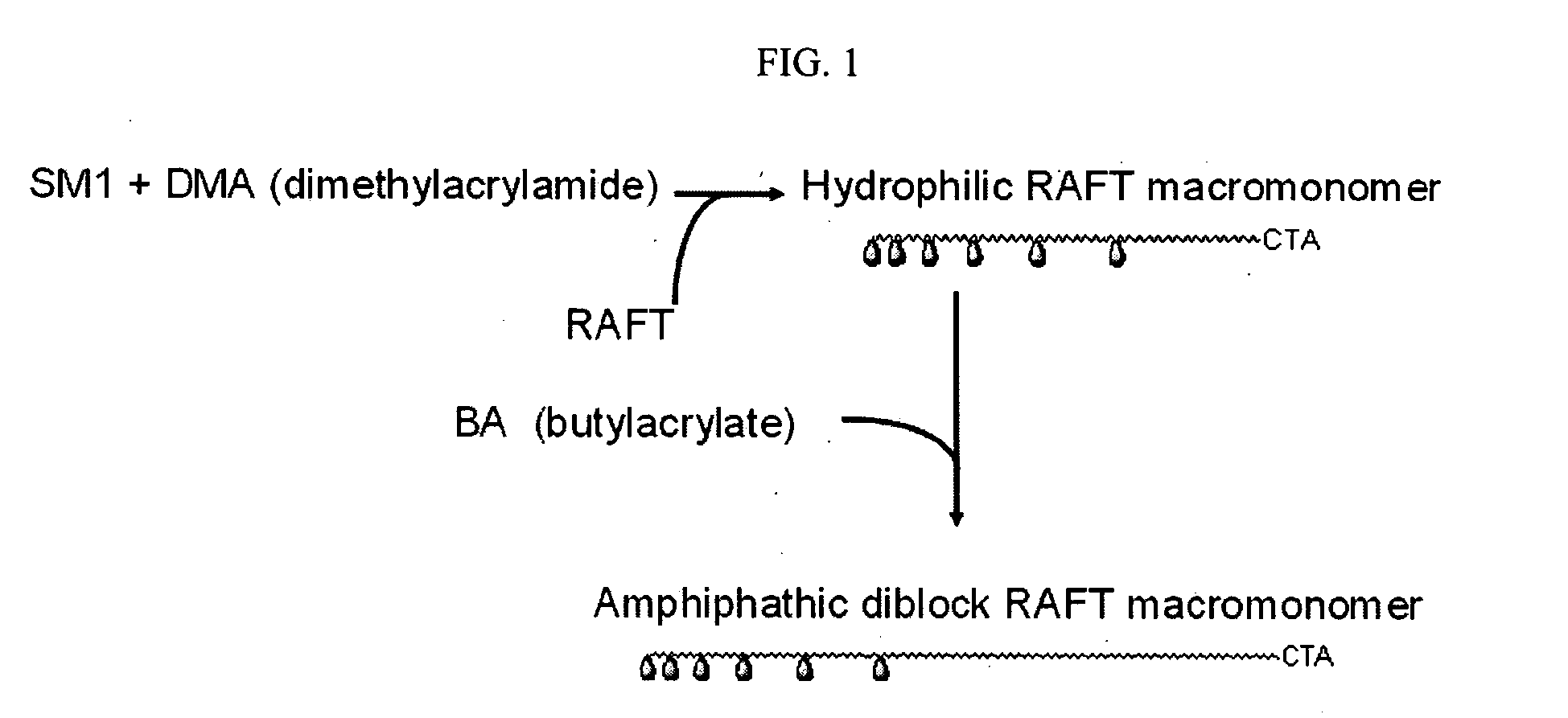Toxin binding compositions
a technology of compositions and toxic substances, applied in the direction of powder delivery, pharmaceutical delivery mechanism, organic active ingredients, etc., can solve the problems of restricting the use of such approaches, cdad with antibiotics is associated with clinical relapse of disease, and antibiotic control is problemati
- Summary
- Abstract
- Description
- Claims
- Application Information
AI Technical Summary
Problems solved by technology
Method used
Image
Examples
example 1
Synthesis of Toxin Binding Compositions
[0066] SMI precursor 1 was synthesized as previously reported. See WO 02 / 044190.
Synthesis of SMI:
[0067] To a solution of 25 ml ethylene diamine (370 mmol) and 30 ml of dimethylformamide, 10 gm of SMI precursor 1 (14.8 mmol) was added and the reaction mixture was stirred at 85° C. for 18 hours. Progress of reaction was monitored by TLC (dichloromethane:methanol:water=6:4:0.15). Upon completion of reaction, the mixture was concentrated to 20 ml with rotary evaporator and the SMI precursor 2 was obtained as white precipitate by pouring the concentrate into 1.5 L isopropanol. The filtered precipitate was dried under vacuum for 10 hours and used directly for subsequent acyloylation.
[0068] Crude SMI precursor 2 was suspended in 80 ml MeOH / water mixture (1:1 by volume) and stirred in ice bath. 4.6 gm sodium carbonate (44 mmol) was added, which was followed by addition of 3.6 ml acryloyl chloride (44 mmol) with a dropping funnel over 10 minutes. ...
PUM
| Property | Measurement | Unit |
|---|---|---|
| surface area | aaaaa | aaaaa |
| diameter | aaaaa | aaaaa |
| diameter | aaaaa | aaaaa |
Abstract
Description
Claims
Application Information
 Login to View More
Login to View More - R&D
- Intellectual Property
- Life Sciences
- Materials
- Tech Scout
- Unparalleled Data Quality
- Higher Quality Content
- 60% Fewer Hallucinations
Browse by: Latest US Patents, China's latest patents, Technical Efficacy Thesaurus, Application Domain, Technology Topic, Popular Technical Reports.
© 2025 PatSnap. All rights reserved.Legal|Privacy policy|Modern Slavery Act Transparency Statement|Sitemap|About US| Contact US: help@patsnap.com



